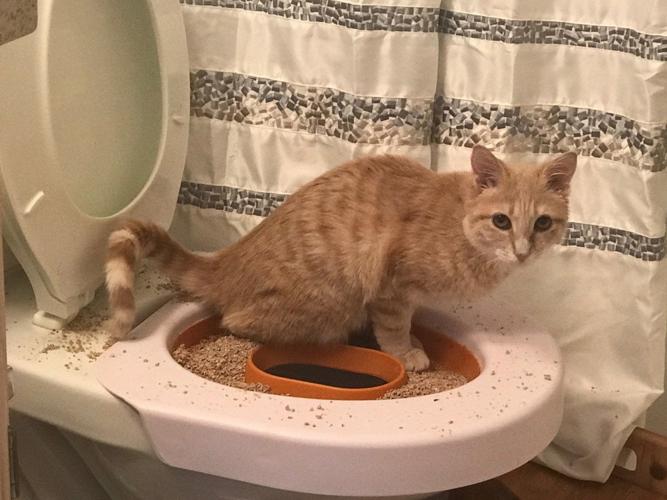Avoid Clogs and Damage: Never Flush Cat Poop Down Your Toilet - Expert Insights
Avoid Clogs and Damage: Never Flush Cat Poop Down Your Toilet - Expert Insights
Blog Article
Are you currently searching for facts and techniques around Can You Flush Cat Poo or Litter Down the Toilet??

Introduction
As pet cat proprietors, it's important to be mindful of how we get rid of our feline pals' waste. While it may appear practical to flush feline poop down the commode, this practice can have damaging consequences for both the setting and human health.
Alternatives to Flushing
Fortunately, there are safer and much more liable methods to take care of pet cat poop. Consider the adhering to alternatives:
1. Scoop and Dispose in Trash
One of the most usual technique of getting rid of feline poop is to scoop it into an eco-friendly bag and toss it in the trash. Make sure to use a devoted clutter scoop and deal with the waste promptly.
2. Use Biodegradable Litter
Select eco-friendly feline trash made from products such as corn or wheat. These clutters are environmentally friendly and can be safely gotten rid of in the trash.
3. Bury in the Yard
If you have a lawn, think about burying cat waste in a marked area away from vegetable gardens and water sources. Make sure to dig deep adequate to stop contamination of groundwater.
4. Mount a Pet Waste Disposal System
Invest in an animal waste disposal system particularly developed for cat waste. These systems make use of enzymes to break down the waste, lowering smell and environmental impact.
Wellness Risks
Along with environmental concerns, purging feline waste can also posture health and wellness risks to human beings. Feline feces might consist of Toxoplasma gondii, a parasite that can create toxoplasmosis-- a potentially extreme disease, specifically for pregnant females and individuals with damaged immune systems.
Environmental Impact
Purging cat poop introduces harmful microorganisms and bloodsuckers into the water system, posturing a significant danger to marine communities. These pollutants can adversely influence aquatic life and compromise water quality.
Final thought
Accountable family pet possession prolongs beyond supplying food and shelter-- it likewise entails correct waste management. By avoiding purging pet cat poop down the bathroom and going with alternate disposal techniques, we can decrease our ecological footprint and protect human wellness.
Why Can’t I Flush Cat Poop?
It Spreads a Parasite
Cats are frequently infected with a parasite called toxoplasma gondii. The parasite causes an infection called toxoplasmosis. It is usually harmless to cats. The parasite only uses cat poop as a host for its eggs. Otherwise, the cat’s immune system usually keeps the infection at low enough levels to maintain its own health. But it does not stop the develop of eggs. These eggs are tiny and surprisingly tough. They may survive for a year before they begin to grow. But that’s the problem.
Our wastewater system is not designed to deal with toxoplasmosis eggs. Instead, most eggs will flush from your toilet into sewers and wastewater management plants. After the sewage is treated for many other harmful things in it, it is typically released into local rivers, lakes, or oceans. Here, the toxoplasmosis eggs can find new hosts, including starfish, crabs, otters, and many other wildlife. For many, this is a significant risk to their health. Toxoplasmosis can also end up infecting water sources that are important for agriculture, which means our deer, pigs, and sheep can get infected too.
Is There Risk to Humans?
There can be a risk to human life from flushing cat poop down the toilet. If you do so, the parasites from your cat’s poop can end up in shellfish, game animals, or livestock. If this meat is then served raw or undercooked, the people who eat it can get sick.
In fact, according to the CDC, 40 million people in the United States are infected with toxoplasma gondii. They get it from exposure to infected seafood, or from some kind of cat poop contamination, like drinking from a stream that is contaminated or touching anything that has come into contact with cat poop. That includes just cleaning a cat litter box.
Most people who get infected with these parasites will not develop any symptoms. However, for pregnant women or for those with compromised immune systems, the parasite can cause severe health problems.
How to Handle Cat Poop
The best way to handle cat poop is actually to clean the box more often. The eggs that the parasite sheds will not become active until one to five days after the cat poops. That means that if you clean daily, you’re much less likely to come into direct contact with infectious eggs.
That said, always dispose of cat poop in the garbage and not down the toilet. Wash your hands before and after you clean the litter box, and bring the bag of poop right outside to your garbage bins.
https://trenchlesssolutionsusa.com/why-cant-i-flush-cat-poop/

I stumbled upon that blog post on How to Dispose of Cat Poop and Litter Without Plastic Bags when doing a search on the search engines. Liked our piece of writing? Please share it. Help other people find it. I treasure reading our article about Can You Flush Cat Poo or Litter Down the Toilet?.
Get Quote Now Report this page